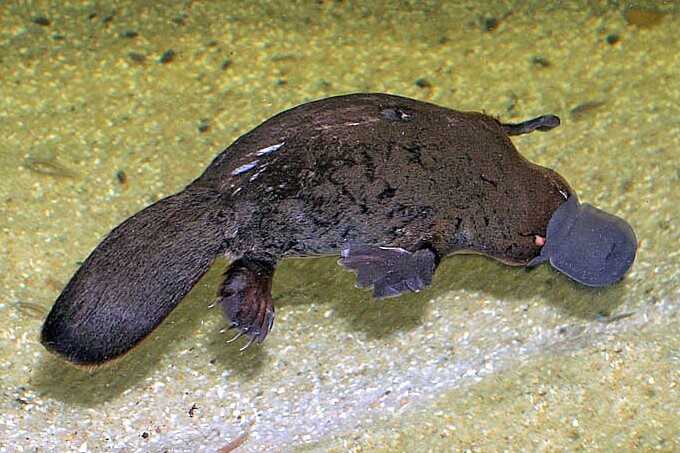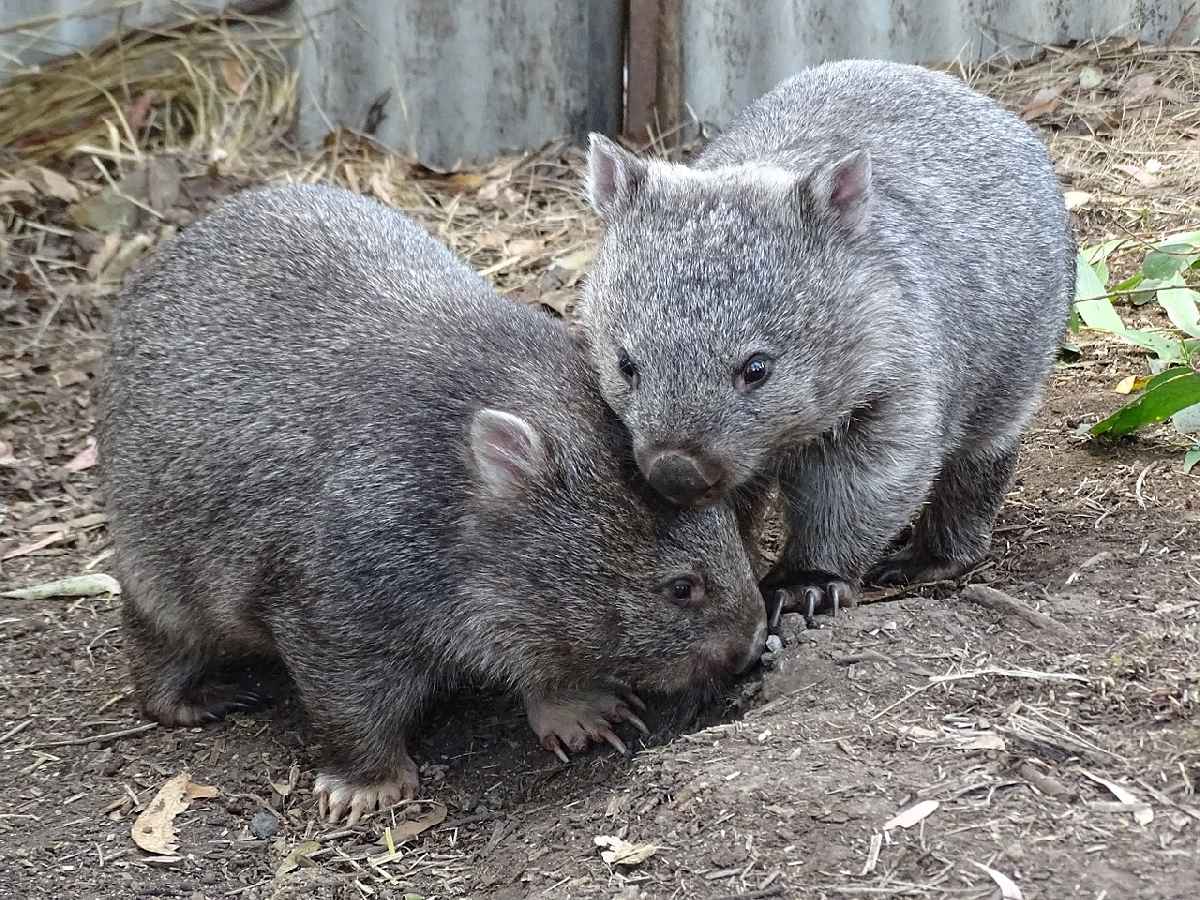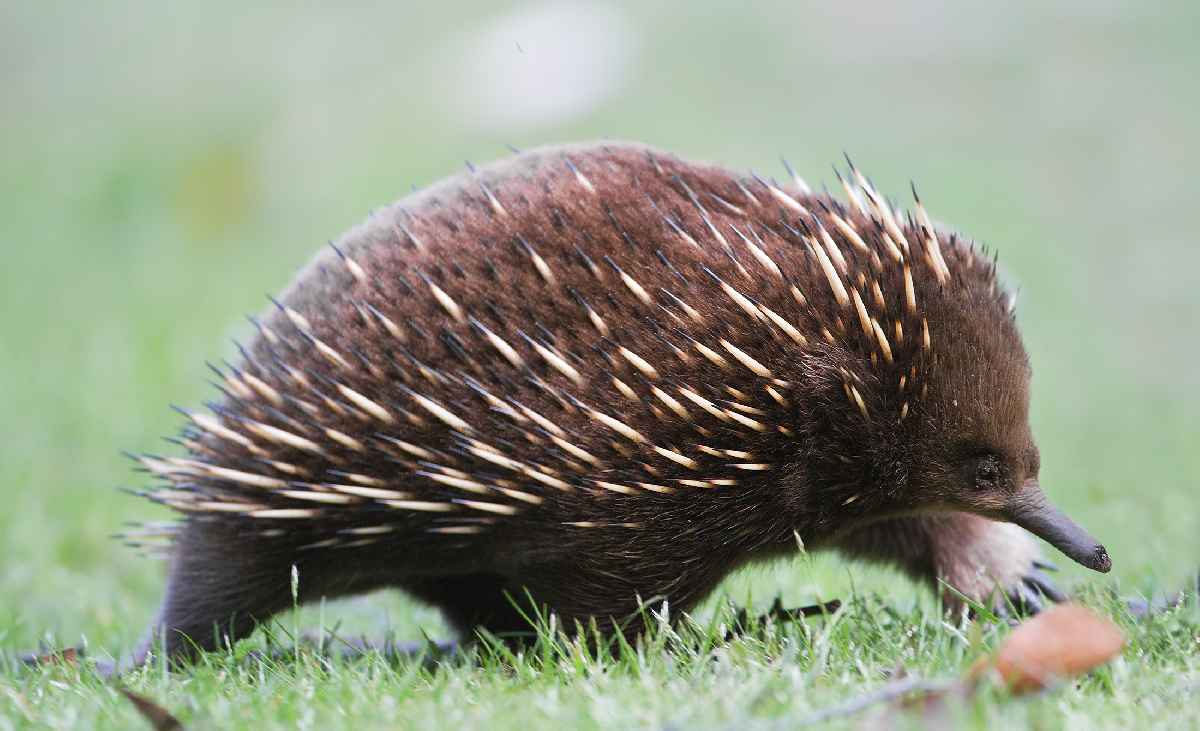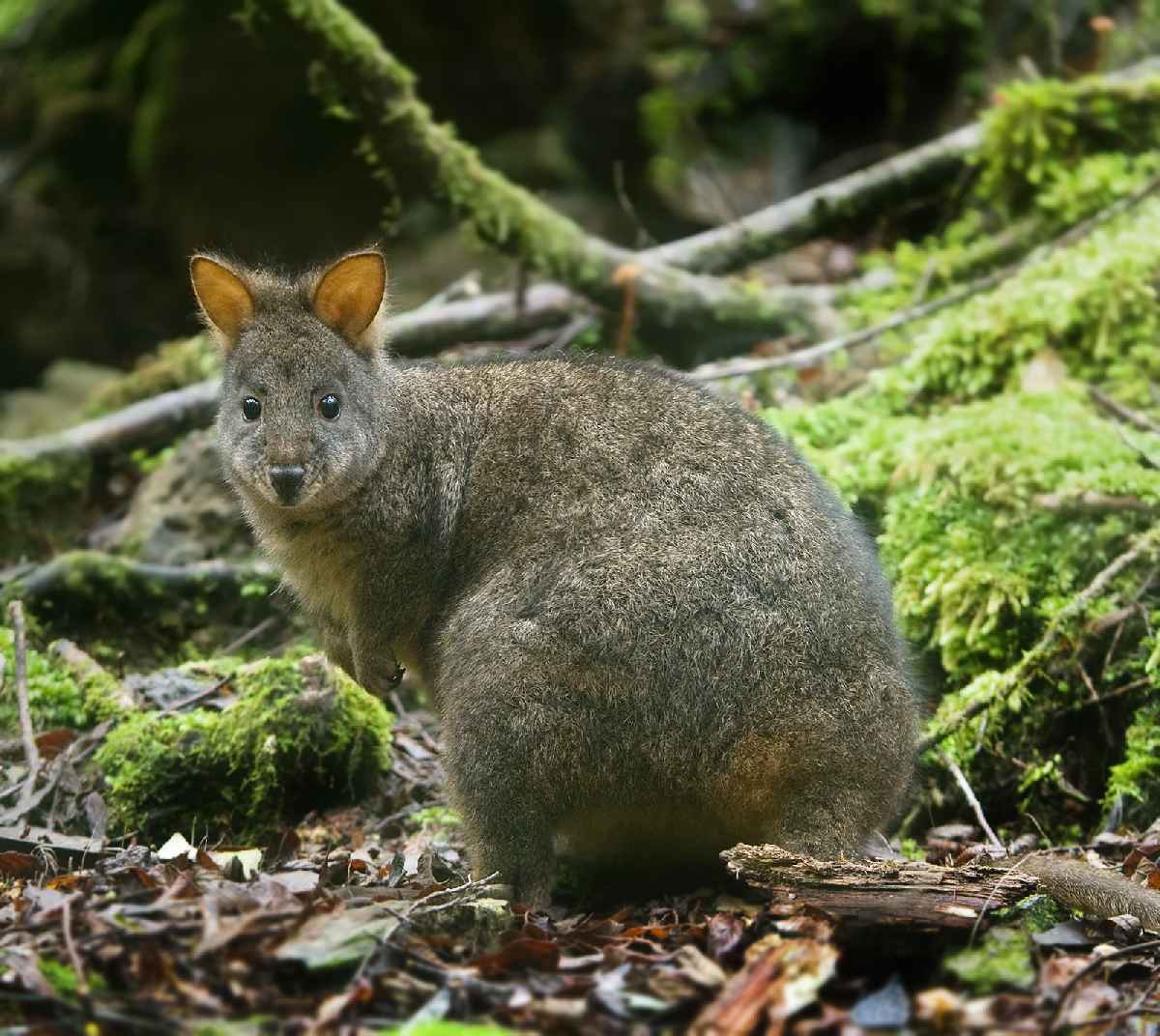There are plenty of mammals in Tasmania. Here's a list of a few you might encounter while bushwalking there.
(Ornithorhynchus anatinus) is a semiaquatic mammal endemic to eastern Australia, including Tasmania. It is the only mammal that lays eggs. Platypus is covered in fur, has a bill luck a duck, talk like a beaver and feet like an otter. Both male and female platypuses are born with ankle spurs, butonly the male's spurs deliver venom that is not lethal to humans, but the pain is so excruciating that the victim may be incapacitated. More at https://en.wikipedia.org/wiki/Platypus
Photo by Stefan Kraft CC BY-SA 3.0

(Vombatus ursinus) is a marsupial. This sturdy and built close to the ground animal can reach between 80 and 130 cm, and weigh between 17 and 40 kg. More at https://en.wikipedia.org/wiki/Common_wombat
Photo by -jkb- CC Attribution-Share Alike 3.0 Unported

(Tachyglossus aculeatus) is covered in fur and spines and has a distinctive snout and a specialized tongue, which it uses to catch its insect prey at a great speed. It is about 30 to 45 cm long It hibernates in winter. Its name derives from words Tachyglossus, as quick tongue and aculeatus, as spiny. More at https://en.wikipedia.org/wiki/Short-beaked_echidna
Photo by JJ Harrison CC BY-SA 3.0

(Thylogale billardierii) (endemic to Tasmania) are nocturnal animals that live in forests and go onto open areas to feed, but rarely more than 100 metres from the forest edge. They grow up to 1–1.2 metres in length including the tail. More at https://en.wikipedia.org/wiki/Tasmanian_pademelon
Photo by JJ Harrison CC BY-SA 3.0

(Pseudomys higginsi) (endemic to Tasmania) is a primarily nocturnal mammal that lives in forested areas. It’s covered in brown fur. Its tail is white on the underside and dark above and longer than the head and body combined. More at https://en.wikipedia.org/wiki/Long-tailed_mouse
(Sarcophilus harrisii) (endemic to Tasmania) is the largest surviving carnivorous marsupial and is usually about 60 cm long. It’s covered in black fur, often with irregular white patches on the chest and rumpand. Its tail is about half its body length. It is most active at dawn and dusk. The devil is an iconic symbol of Tasmania. More at https://en.wikipedia.org/wiki/Tasmanian_devil
Photo by JJ Harrison CC BY-SA 3.0
